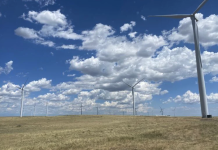The construction of electric transmission upgrades in the Southwest Power Pool (SPP) from 2012 to 2014 resulted in more than $240 million in fuel cost savings for utilities during the first year of operation of the company’s wholesale energy market, according to a new study from the regional power grid operator.
 The study analyzed the value provided by 348 transmission upgrades that involved almost $3.4 billion of capital investment.
The study analyzed the value provided by 348 transmission upgrades that involved almost $3.4 billion of capital investment.
Previous studies by SPP projected the expected future value of transmission construction based on the latest available forecast data. This study used historical operating data obtained during the first year of operation of SPP’s integrated marketplace to document transmission value already realized.
In addition to fuel cost savings, the study quantified other benefits associated with the transmission expansion upgrades, including reliability and resource adequacy benefits, generation capacity cost savings, reduced transmission losses, increased wheeling revenues, and public policy benefits associated with more optimal wind development facilitated by the transmission upgrades. The net present value of all quantified benefits is expected to exceed $16.6 billion over a 40-year period, resulting in a benefit-cost ratio of at least 3.5. This means the investments are expected to produce more than $3.50 in overall benefits for every $1 in transmission-related costs.
“Transmission does more than just keep the lights on,” said Nick Brown, president and CEO of SPP. “It’s an enabling resource that paves the way for numerous benefits to our stakeholders and their customers. A modernized transmission system increases reliability, reduces costs by providing access to a wholesale energy market and effectively integrates wind and other renewable energy to the grid.”
In a letter accompanying the study, Johannes Pfeifenberger, Judy Chang, and Onur Aydin of the Brattle Group said that compared to transmission planning studies, it provides a more accurate estimate of the total benefits that a more robust and flexible transmission infrastructure provides to power marketers, market participants and, ultimately, retail electric customers. Additionally, the group said that “the estimated present value of the production cost savings in the SPP study likely is understated” due to several factors, including the fact that many of the major transmission projects evaluated were not yet in service during most of the period analyzed.
— Source: Southwest Power Pool
For more information,
go to www.spp.org.



























